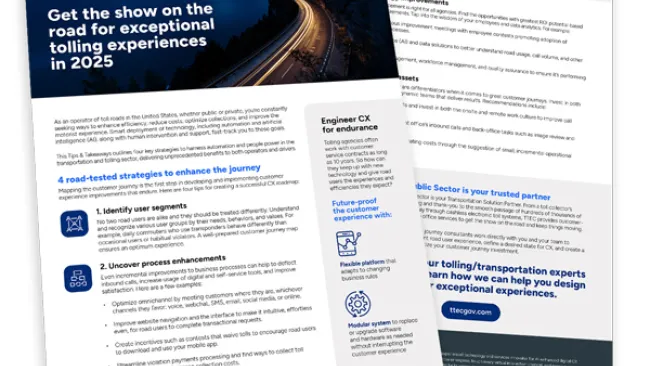This is the age of hypergrowth, where direct-to-consumer startups like Casper (mattresses), Warby Parker (glasses), and Brandless (housewares and beauty) are tearing down traditional retail models to bring products to your door faster and more conveniently. At first glance, furniture seems immune to the direct-to-consumer wave. Selling—and delivering—furniture has long been a thorny business.
It involves selling large, heavy products in a showroom that most people purchase infrequently. The delivery process is also often convoluted, creating a frustrating customer experience. Additionally, to win the customer’s loyalty, a brand would need to differentiate itself in every way—from design and price to value and convenience—in what’s already a highly crowded market.
Those challenges are precisely what drew four entrepreneurs with software engineering backgrounds to tackle the furniture business.
Controlling the end-to-end customer experience
Founded in 2011 by Aamir Baig, Fraser Hall, and brothers Sam and Andy Prochazka, Article is a direct-to-consumer business that specializes in online furniture. While there are already many online furniture stores, the Vancouver-based company is betting that by simplifying the shopping process (e.g., no showrooms or salespeople) and maintaining direct control of the business from design to the supply chain, customer service, and delivery, it can offer a more compelling customer experience.
Meanwhile, the furniture market is undergoing a major shift. From 2012 to 2014, furniture expenditures among consumers over age 70 decreased from $17.7 billion to about $3 billion, according to Furniture Today. In contrast, furniture expenditures by millennials rose from $11.1 billion to $27 billion during the same period. But millennials aren’t buying sofas and beds the same way their grandparents did.
“Disruption occurs when proven practices no longer produce predictable results,” writes Mark McDonald, vice president and Gartner fellow, in a blog post. McDonald wasn’t referring to the furniture industry, per se, but it’s an apt observation. Last year, IKEA scrapped plans to open three new stores in the U.S. and is reportedly shifting more resources to online sales. And JCPenney recently announced that it will no longer sell furniture in its stores—it will only be available online.
Whereas previous generations may have purchased a living room set from a department store with the intention of using it for decades, people who are in their 20s and 30s today are most likely not homeowners—nor are they shopping in department stores. Throw in the fact that more consumers are willing to make big ticket purchases online or from their phone, and it’s clear that the furniture market is ready for disruption.
The Remarkably Better Index
Data forms the underpinning of how companies transform the customer experience, increase productivity, and fuel innovation. At a company founded by four engineers, this is especially true. The company’s co-founders made it a point to develop a home-grown, systematic way to collect data, monitor, and review it, and channel those insights into decisions across the organization.
“These days there’s a tremendous opportunity to collect data,” says Article CMO and co-founder Andy Prochazka. “And it’s really important to collect the type of data that allows us to make an experience better.” Customer feedback is one of the “most influential” types of data for the company, he explains, and the co-founders built a proprietary platform, which they dubbed the Remarkably Better Index (RBI), for processing the data in real time.
Similar to Net Promoter Score, the RBI collects customers’ survey responses about their experience with the company. The “magic of RBI happens on the classification side,” Prochazka says, where the system takes the raw feedback data, classifies and scores it along different dimensions of the customer experience. The result is a multi-layered scorecard of how the company is doing in terms of the online shopping experience, communications with the delivery team, the quality of the product, and other areas.
Article uses these insights to guide the development of its products and services. An in-house team designs the furniture, which is manufactured in Asia. And from customer feedback to clicks and likes on its Instagram page, the company gives a lot of weight to customer input.
For example, it was discovered that the inability to fit furniture through elevator doors is a major reason for returns. So the company made size adjustments to its products. It’s also the reason why customer service is the largest department (the company’s total employee headcount is about 300 people). “It’s not like we intentionally planned to have the largest group be customer service,” Prochazka says. “It’s just that every time we forecast growth, we look at the forecast for customer needs and that informs increasing our customer service capacity.” The customer care team is located within the company’s headquarters in an open office layout where different departments work side by side.
While many organizations view customer care as a cost center, Article sees it as a differentiator. The company eschewed conventional contact center metrics like average handle time or answer speed. Care associates provide a wide range of information—from delivery updates to describing a sofa’s firmness—and may take as long as they need to assist each customer. The company’s goal is to answer customers’ questions as simply and clearly as possible without making an aggressive sale. What’s more, the company doesn’t have a customer sales team, nor are associates required to upsell or cross-sell products, according to Prochazka.
Crossing the last mile
Article’s efforts to transform the furniture shopping experience are paying off. The company was profitable two years after its launch, and in 2018 it ranked No. 1 on Canadian Business’ Growth 500 list with sales rising 56,581 percent within a five-year period. However, the company is hardly in cruise mode. In fact, Article is competing with other furniture startups like Burrow, The Inside, and Maiden Home, as well as retail behemoths Amazon, Walmart, and IKEA to win the last-mile delivery race.
While IKEA’s customers cart the furniture home themselves, it also offers in-store child caretakers and restaurants so that shoppers don’t have to rush. Worried about your new sofa getting stuck in the doorway? Burrow’s furniture is delivered by mail in separate boxes (which the owner must then assemble). Other companies like Target and Walmart have acquired or partnered with delivery startups.
Amazon, which controls about half of e-commerce sales in the U.S., is also exploring numerous ways of solving the last-mile delivery problem from drones to testing an autonomous delivery service called Scout. Also, it already built a massive logistics business through its retail operations and third-party marketplace.
“Delivery is a big deal in our industry,” Prochazka says. Indeed, a company’s shipping and delivery services can influence a customer’s decision whether to do business with the company. But for most businesses, deliveries aren’t handled in-house. As a result, Article is tackling the challenge by building its own final-mile delivery service—the Article Delivery Team (ADT)—which it recently launched in Los Angeles and New York.
The ADT teams are staffed by delivery personnel who are employed on a full-time basis by Article and directly supported by the company’s customer service team. ADT will deliver furniture from the company’s four warehouses in the U.S. to customers’ doors. By maintaining control of the delivery process, Article says it can deliver products and resolve issues faster. In its pilot program, ADT was able to make deliveries two days faster than an outsourced delivery partner. The company plans to introduce the ADT program to other North American cities over the course of 18 months.
Overcoming hypergrowth challenges
Accurately conveying the look and feel of online furniture is another industry challenge that Article is looking to solve. Some competitors have partnered with store owners to create highly curated showrooms. Others have tried pop-up shops. For its part, Article isn’t planning to open a brick-and-mortar store. “The general sentiment is that there’s still a tremendous amount of work to be done online,” Prochazka says, “and we’re hesitant to launch a brick-and-mortar strategy unless we can do it remarkably better than it’s been done in the past.”
Article, however, must balance its drive for finding innovative solutions with the mundane aspects of running a business. Directly controlling the customer experience also entails handling all the challenges associated with each department, from recruiting and training personnel to managing and coordinating all the departments, while also solidifying lasting relationships with customers.
But rather than worry about what other companies are doing, Prochazka says Article is focused on continuing to improve its customer experience. After all, “you can always have a higher quality product. You can always have a better price and you can always have a faster delivery time,” he says. “The great thing about those three areas of focus is that there’s no end to them.”

















